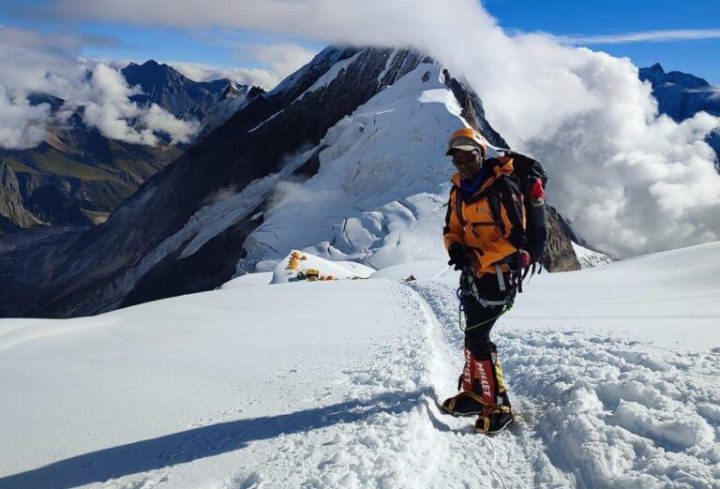The adventurous spirit of Kenyan climber Cheruiyot Kirui was extinguished on the treacherous slopes of Mount Everest, casting a pall of sorrow over the nation on Thursday.
Discovered dead above 8,000 meters, his loss reverberates deeply in the climbing community and beyond.
His death highlights the inherent dangers of high-altitude mountaineering and underscores the extreme difficulties involved in retrieving bodies from the world’s tallest peak.
Mount Everest, standing at 8,848 meters (29,029 feet), is notorious not only for its formidable climbing challenges but also for the perilous conditions in its so-called “death zone” above 8,000 meters.
The lack of oxygen in this zone, roughly one-third of what is available at sea level, coupled with extreme cold and treacherous terrain, makes it a dangerous place for climbers.
It is within this area that many climbers, including Kirui, have met their end.
Recovering bodies from such altitudes is an exceedingly difficult and hazardous task.An article by Mount Kilimanjaro dated April 15, 2024, titled “Retrieving Bodies from Mount Everest: The Process and Cost,” elaborates on the complexities of such operations.
Bodies in the death zone often become frozen to the mountain, and transportation of a deceased climber is fraught with risks.
Business Insider reports that the final repatriation of bodies from Everest can cost tens of thousands of dollars, sometimes around $70,000 (approximately Sh9 million).
This immense cost arises from the need for specialized recovery teams, typically composed of experienced Sherpas, who are equipped to navigate the perilous conditions and handle the additional weight of a frozen body.
The challenges do not end with the financial burden. The process itself is long and arduous, sometimes taking days or even weeks to complete. In 1984, a tragic example of the risks involved occurred when two Nepalese climbers lost their lives while attempting to recover a body from Everest.
Such incidents underscore the dangers that rescuers face, making body retrieval missions a perilous endeavor that can result in further loss of life.The majority of bodies on Everest remain at elevations greater than 8,000 meters.
Depending on the duration a body has been there, it might be partially covered by snow or located in an inaccessible position.
These factors add to the time-consuming and labor-intensive nature of retrieval efforts. The article by Mount Kilimanjaro notes that the cost of recovering a single body can soar to $100,000 or higher, making it prohibitively expensive and logistically challenging for many families and governments to repatriate their loved ones.
Cheruiyot Kirui’s tragic end on Everest serves as a somber reminder of the extreme dangers of high-altitude mountaineering.
His death not only brings sorrow to his family and the Kenyan nation but also raises awareness of the harsh realities faced by climbers on the world’s highest peaks.
The risks, the costs, and the heart-wrenching challenges of body recovery missions highlight the immense respect and caution required when tackling such formidable natural wonders.





















Add Comment